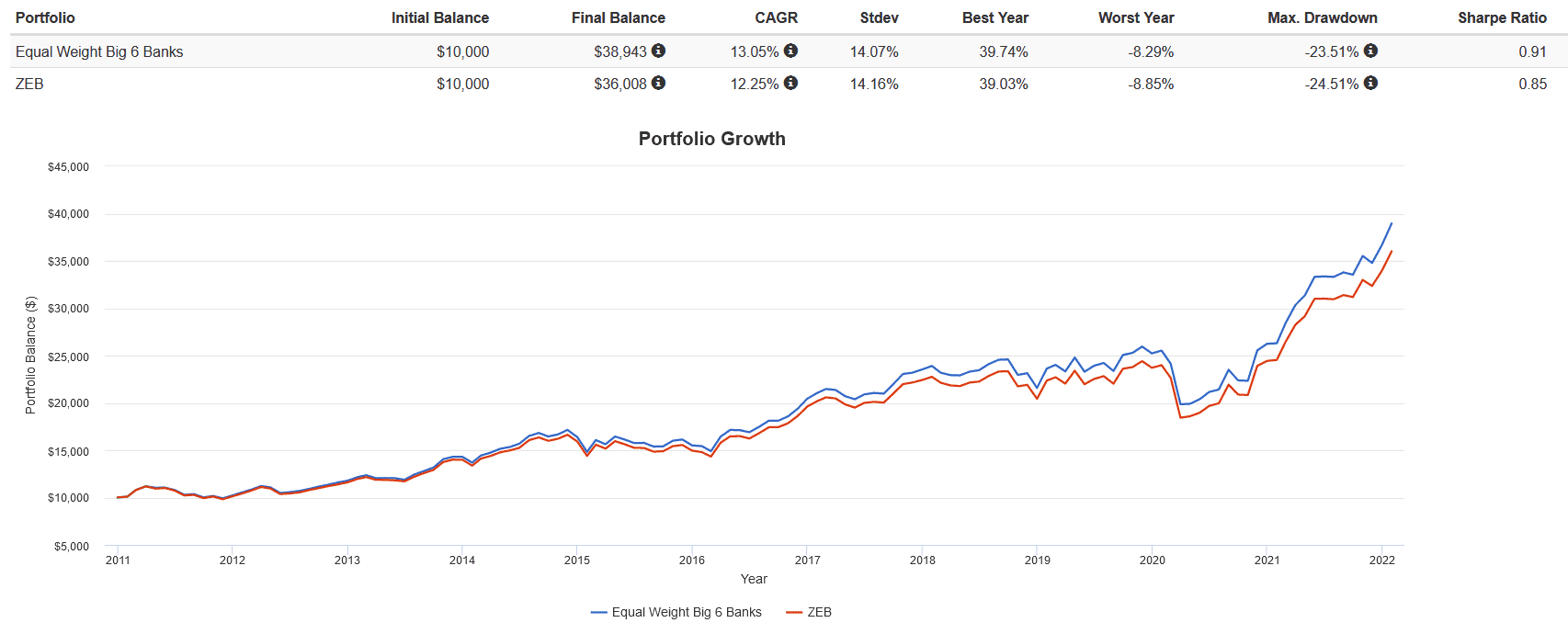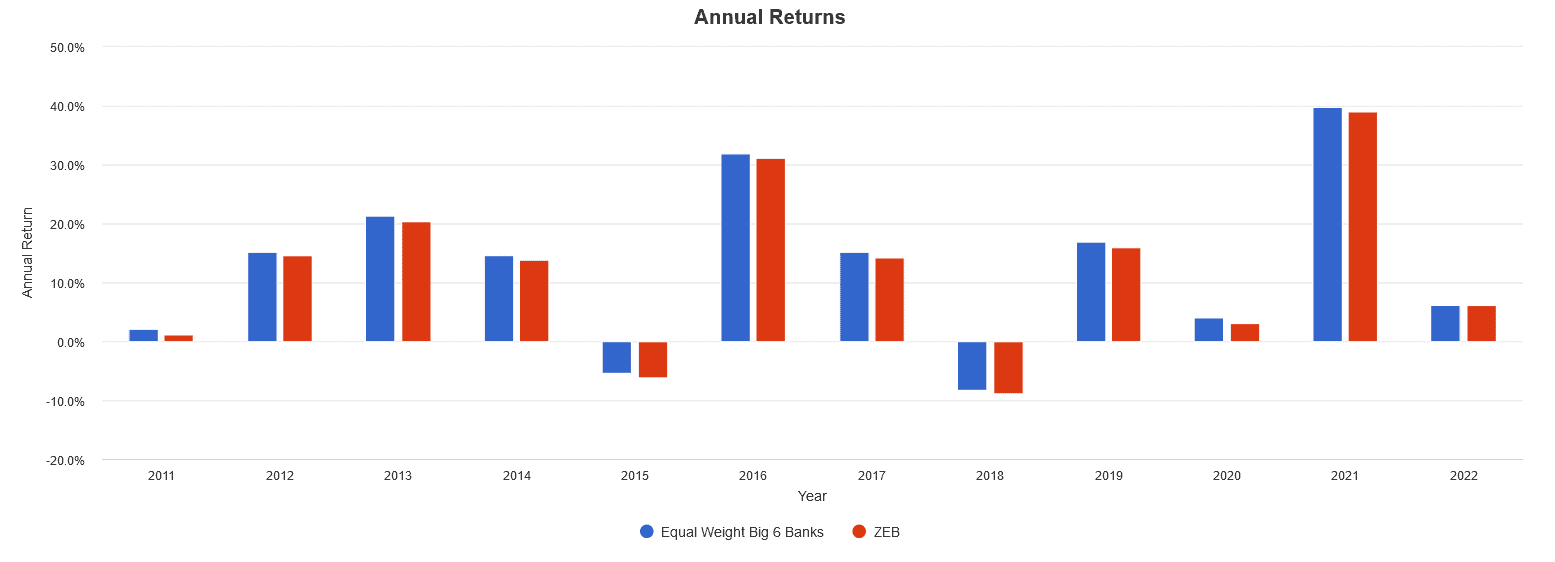Canada’s so-called Big Six banks dominate the S&P/TSX Composite Index by market capitalization, comprising some of its largest and most profitable constituents. These members include Royal Bank of Canada, Toronto-Dominion Bank, Canadian Imperial Bank of Commerce, Bank of Nova Scotia, Bank of Montreal, and National Bank of Canada
Together, these banks form an oligopoly of sorts, with minimal competition, an endless customer base, and secure profits. These banks have historically been managed very well, often postings good earnings growth and consistent dividend increases with high yields.
The TSX banking sector has outperformed the broad index historically. Today, with inflation at all-time highs and the threat of multiple rate hikes on the horizon, these bank stocks are poised to outperform in 2022.
Investors seeking to gain exposure can either choose to buy equal amounts of all six stocks, or buy a sector exchange-traded fund (ETF) that holds them all. Let’s look at the pros and cons of each approach.
The ETF method
There is an easy way to own all six of the big bank stocks with one ticker — BMO S&P/TSX Equal Weight Bank Index ETF (TSX:ZEB). ZEB holds shares of all six banks in a “basket” of sorts. When you purchase a share of the ETF, you are getting a slice of this basket, with proportionate exposure to all of its underlying stocks.
ZEB is advantageous in that it is completely hands off – asides from buying shares of the ETF, you don’t have to worry about rebalancing. The dividend payments are easily tracked too, with all six of the underlying banks’ dividends averaged out to pay an annual yield of 3.40% currently.
ZEB currently trades at around $42 a share, making it a very capital efficient method for investors with smaller accounts to gain exposure to otherwise pricy big bank stocks, some of which trade in the $100+ share price range. If you don’t have too much money to allocate to bank stocks, ZEB is the way to go.
The stock method
There is a big downside to ZEB – the management expense ratio (MER). This is the cost charged by the fund provider to you on a annual basis for managing the ETF. The current MER is 0.28%, which means that for a $10,000 account, you are being charged $28 dollars annually to hold ZEB.
That might not sound like alot, but it does add up over time. For larger accounts, the opportunity cost of the MER can compound significant to result in missed gains. Compare this to buying and holding each of the six big bank stocks individually. If you are using a $0-commission brokerage like Wealthsimple Trade, your fees would be 0%.
If you wanted to create a six-fund portfolio of Canadian bank stocks, you should purchase enough shares of each so the total dollar amount in each stock represents roughly 16.66% of your allocation, as seen in this image:

The Foolish takeaway
A word of caution: the backtest results provide below are hypothetical in nature, do not reflect actual investment results, and are not guarantees of future results. Hypothetical returns do not reflect trading costs, transaction fees, or actual taxes due on investment returns.
That being said, from 2011 to present, with all dividends reinvested and quarterly rebalancing, the equal weight six-fund portfolio of big Canadian banks beat ZEB slightly in terms of risk and return. This can mainly be attributed to the 0.28% MER, which adds up over time to create tracking error.


Choosing between the two boils down to this question: do you have the time and discipline to manage a portfolio of six stocks, reinvesting the dividends and rebalancing every quarter without tinkering or deviating from your strategy? If not, paying 0.28% for someone else to do it for you might make more sense.






